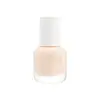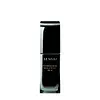What's inside
What's inside
 Key Ingredients
Key Ingredients

 Benefits
Benefits

 Concerns
Concerns

 Ingredients Side-by-side
Ingredients Side-by-side

Water
Skin ConditioningDimethicone
EmollientPropanediol
SolventCaprylyl Methicone
Skin ConditioningCI 77891
Cosmetic ColorantEthylhexyl Salicylate
UV AbsorberButyloctyl Salicylate
Skin ConditioningTrisiloxane
Skin ConditioningMethyl Trimethicone
Skin ConditioningDimethicone/Vinyl Dimethicone Crosspolymer
Skin ConditioningPhenyl Trimethicone
Skin ConditioningPolyglyceryl-3 Polydimethylsiloxyethyl Dimethicone
Skin Conditioning1,2-Hexanediol
Skin ConditioningLauryl Polyglyceryl-3 Polydimethylsiloxyethyl Dimethicone
Skin ConditioningSodium Chloride
MaskingAlumina
AbrasiveDisteardimonium Hectorite
StabilisingSilica
AbrasiveXylitol
HumectantHydrogenated Lecithin
EmulsifyingCI 77492
Cosmetic ColorantAluminum Hydroxide
EmollientCaprylyl Glycol
EmollientSimethicone
EmollientEthylhexylglycerin
Skin ConditioningTriethoxycaprylylsilane
Trihydroxystearin
Skin ConditioningStearic Acid
CleansingCI 77491
Cosmetic ColorantParfum
MaskingTocopheryl Linoleate
AntioxidantSimmondsia Chinensis Seed Oil
EmollientCamellia Sinensis Seed Oil
HumectantHexyl Cinnamal
PerfumingCI 77499
Cosmetic ColorantLinalool
PerfumingLimonene
PerfumingTocopherol
AntioxidantPropylene Glycol
HumectantSodium Hyaluronate
HumectantWater, Dimethicone, Propanediol, Caprylyl Methicone, CI 77891, Ethylhexyl Salicylate, Butyloctyl Salicylate, Trisiloxane, Methyl Trimethicone, Dimethicone/Vinyl Dimethicone Crosspolymer, Phenyl Trimethicone, Polyglyceryl-3 Polydimethylsiloxyethyl Dimethicone, 1,2-Hexanediol, Lauryl Polyglyceryl-3 Polydimethylsiloxyethyl Dimethicone, Sodium Chloride, Alumina, Disteardimonium Hectorite, Silica, Xylitol, Hydrogenated Lecithin, CI 77492, Aluminum Hydroxide, Caprylyl Glycol, Simethicone, Ethylhexylglycerin, Triethoxycaprylylsilane, Trihydroxystearin, Stearic Acid, CI 77491, Parfum, Tocopheryl Linoleate, Simmondsia Chinensis Seed Oil, Camellia Sinensis Seed Oil, Hexyl Cinnamal, CI 77499, Linalool, Limonene, Tocopherol, Propylene Glycol, Sodium Hyaluronate
Water
Skin ConditioningMethyl Trimethicone
Skin ConditioningEthylhexyl Methoxycinnamate
UV AbsorberHydrogenated Polydecene
EmollientDipropylene Glycol
HumectantPhenyl Trimethicone
Skin ConditioningTalc
AbrasiveMica
Cosmetic ColorantPEG-8 Trifluoropropyl Dimethicone Copolymer
Skin ConditioningMaltitol
HumectantSorbitan Isostearate
EmulsifyingTribehenin
EmollientSodium Chloride
MaskingTrimethylsiloxysilicate
EmollientTrifluoropropyl Dimethiconol
Skin ConditioningDimethicone
EmollientPhytosteryl Macadamiate
Skin ConditioningDimethicone/Vinyl Dimethicone Crosspolymer
Skin ConditioningSilica
AbrasiveParfum
MaskingSynthetic Fluorphlogopite
Alumina
AbrasiveAcetyl Glucosamine
Skin ConditioningHydrogenated Lecithin
EmulsifyingTin Oxide
AbrasiveAlcohol
AntimicrobialButylene Glycol
HumectantBHT
AntioxidantHydrolyzed Silk
HumectantMethicone
EmollientDioscorea Panthaica Root Extract
EmollientTocopherol
AntioxidantSilk Powder
Skin ConditioningChlorphenesin
AntimicrobialPhenoxyethanol
PreservativeSorbic Acid
PreservativeCinnamyl Alcohol
PerfumingCitronellol
PerfumingGeraniol
PerfumingHexyl Cinnamal
PerfumingCI 77491
Cosmetic ColorantCI 77492
Cosmetic ColorantCI 77499
Cosmetic ColorantCI 77891
Cosmetic ColorantWater, Methyl Trimethicone, Ethylhexyl Methoxycinnamate, Hydrogenated Polydecene, Dipropylene Glycol, Phenyl Trimethicone, Talc, Mica, PEG-8 Trifluoropropyl Dimethicone Copolymer, Maltitol, Sorbitan Isostearate, Tribehenin, Sodium Chloride, Trimethylsiloxysilicate, Trifluoropropyl Dimethiconol, Dimethicone, Phytosteryl Macadamiate, Dimethicone/Vinyl Dimethicone Crosspolymer, Silica, Parfum, Synthetic Fluorphlogopite, Alumina, Acetyl Glucosamine, Hydrogenated Lecithin, Tin Oxide, Alcohol, Butylene Glycol, BHT, Hydrolyzed Silk, Methicone, Dioscorea Panthaica Root Extract, Tocopherol, Silk Powder, Chlorphenesin, Phenoxyethanol, Sorbic Acid, Cinnamyl Alcohol, Citronellol, Geraniol, Hexyl Cinnamal, CI 77491, CI 77492, CI 77499, CI 77891
Ingredients Explained
These ingredients are found in both products.
Ingredients higher up in an ingredient list are typically present in a larger amount.
Alumina is another name for the compound aluminum oxide. It is used as a thickener, absorbent, and abrasive.
As an absorbent, alumina can give a mattifying effect. It is used in mineral sunscreens to help coat nano-sized filters, such as titanium dioxide. By increasing the size of the UV filters, these ingredients stay on the skin for a longer time. By coating small sized ingredients, alumina helps thicken a product.
Alumina may be used as an abrasive, or exfoliant.
Alumina is naturally occurring in the mineral corundum. Certain varieties of corundum create rubies and sapphires. Corundum is also the crystalline form of alumina.
Learn more about AluminaCi 77491 is also hydrated iron III oxide. It's sole purpose is to give a red/pink hue to products.
Iron III oxides are classified as inorganic chemicals for coloring.
Synthetically created Ci 77491 is considered safer than those naturally found. This is because the synthetically created version may contain less impurities. Iron oxides are generally non-toxic and non-allergenic.
Learn more about CI 77491Ci 77492 is also hydrated iron III oxide. It's sole purpose is to give a yellow hue to products.
Iron III oxides are classified as inorganic chemicals for coloring.
Synthetically created Ci 77492 is considered safer than those naturally found. This is because the synthetically created version may contain less impurities. Iron oxides are generally non-toxic and non-allergenic.
Learn more about CI 77492Ci 77499 is also hydrated iron III oxide. It is created from mixing red and black iron oxides. This helps give shades of darkness to a product.
Iron III oxides are classified as inorganic chemicals for coloring.
Ci 77891 is a white pigment from Titanium dioxide. It is naturally found in minerals such as rutile and ilmenite.
It's main function is to add a white color to cosmetics. It can also be mixed with other colors to create different shades.
Ci 77891 is commonly found in sunscreens due to its ability to block UV rays.
Learn more about CI 77891Dimethicone is a type of synthetic silicone created from natural materials such as quartz.
What it does:
Dimethicone comes in different viscosities:
Depending on the viscosity, dimethicone has different properties.
Ingredients lists don't always show which type is used, so we recommend reaching out to the brand if you have questions about the viscosity.
This ingredient is unlikely to cause irritation because it does not get absorbed into skin. However, people with silicone allergies should be careful about using this ingredient.
Note: Dimethicone may contribute to pilling. This is because it is not oil or water soluble, so pilling may occur when layered with products. When mixed with heavy oils in a formula, the outcome is also quite greasy.
Learn more about DimethiconeThis ingredient is a silicone used to improve the texture of products and absorb oil. It does not get absorbed into the skin.
Like other silicones, Dimethicone/Vinyl Dimethicone Crosspolymer helps condition the skin by creating a barrier. In this sense, it can act as an emollient and trap moisture in.
This ingredient is a type of elastomer.
Learn more about Dimethicone/Vinyl Dimethicone CrosspolymerHexyl Cinnamal is a fragrance ingredient with a similar scent to jasmine. It can be naturally found in chamomile essential oil.
This ingredient is a known EU allergen and may sensitize the skin. The EU requires this ingredient to be listed separately on an ingredients list.
Hexyl Cinnamal is not water soluble but is soluble in oils.
Learn more about Hexyl CinnamalHydrogenated Lecithin is created from the hydrogenation of lecithin (a group of phospholipids). Hydrogenation is a chemical reaction between hydrogen and another element.
This ingredient is an emollient and emulsifier. As an emollient, it helps soften skin by trapping moisture within. As an emulsifier, it prevents oil and water ingredients from separating.
Methyl Trimethicone is a type of silicone. It is a solvent and emulsifier.
Solvents are used to keep ingredients together in a product. They can help dissolve ingredients to stable bases or help evenly distribute ingredients throughout the product.
Emulsifiers help stabilize a product. It does this by preventing certain ingredients from separating.
Methyl Trimethicone does not get absorbed into the skin.
Learn more about Methyl TrimethiconeParfum is a catch-all term for an ingredient or more that is used to give a scent to products.
Also called "fragrance", this ingredient can be a blend of hundreds of chemicals or plant oils. This means every product with "fragrance" or "parfum" in the ingredients list is a different mixture.
For instance, Habanolide is a proprietary trade name for a specific aroma chemical. When used as a fragrance ingredient in cosmetics, most aroma chemicals fall under the broad labeling category of “FRAGRANCE” or “PARFUM” according to EU and US regulations.
The term 'parfum' or 'fragrance' is not regulated in many countries. In many cases, it is up to the brand to define this term.
For instance, many brands choose to label themselves as "fragrance-free" because they are not using synthetic fragrances. However, their products may still contain ingredients such as essential oils that are considered a fragrance by INCI standards.
One example is Calendula flower extract. Calendula is an essential oil that still imparts a scent or 'fragrance'.
Depending on the blend, the ingredients in the mixture can cause allergies and sensitivities on the skin. Some ingredients that are known EU allergens include linalool and citronellol.
Parfum can also be used to mask or cover an unpleasant scent.
The bottom line is: not all fragrances/parfum/ingredients are created equally. If you are worried about fragrances, we recommend taking a closer look at an ingredient. And of course, we always recommend speaking with a professional.
Learn more about ParfumPhenyl Trimethicone is a silicon-based polymer. It is derived from silica.
Phenyl Trimethicone is used as an emollient and prevents products from foaming.
As an emollient, it helps trap moisture in the skin. It is considered an occlusive.
Learn more about Phenyl TrimethiconeSilica, also known as silicon dioxide, is a naturally occurring mineral. It is used as a fine, spherical, and porous powder in cosmetics.
Though it has exfoliant properties, the function of silica varies depending on the product.
The unique structure of silica enhances the spreadability and adds smoothness, making it a great texture enhancer.
It is also used as an active carrier, emulsifier, and mattifier due to its ability to absorb excess oil.
In some products, tiny microneedles called spicules are made from silica or hydrolyzed sponge. When you rub them in, they lightly polish away dead skin layers and enhance the penetration of active ingredients.
Learn more about SilicaChances are, you eat sodium chloride every day. Sodium Chloride is also known as table salt.
This ingredient has many purposes in skincare: thickener, emulsifier, and exfoliator.
You'll most likely find this ingredient in cleansers where it is used to create a gel-like texture. As an emulsifier, it also prevents ingredients from separating.
There is much debate on whether this ingredient is comedogenic. The short answer - comedogenic ratings don't tell the whole story. Learn more about comegodenic ratings here.
The concensus about this ingredient causing acne seems to be divided. Research is needed to understand if this ingredient does cause acne.
Scrubs may use salt as the primary exfoliating ingredient.
Learn more about Sodium ChlorideTocopherol (also known as Vitamin E) is a common antioxidant used to help protect the skin from free-radicals and strengthen the skin barrier. It's also fat soluble - this means our skin is great at absorbing it.
Vitamin E also helps keep your natural skin lipids healthy. Your lipid skin barrier naturally consists of lipids, ceramides, and fatty acids. Vitamin E offers extra protection for your skin’s lipid barrier, keeping your skin healthy and nourished.
Another benefit is a bit of UV protection. Vitamin E helps reduce the damage caused by UVB rays. (It should not replace your sunscreen). Combining it with Vitamin C can decrease sunburned cells and hyperpigmentation after UV exposure.
You might have noticed Vitamin E + C often paired together. This is because it is great at stabilizing Vitamin C. Using the two together helps increase the effectiveness of both ingredients.
There are often claims that Vitamin E can reduce/prevent scarring, but these claims haven't been confirmed by scientific research.
Learn more about TocopherolWater. It's the most common cosmetic ingredient of all. You'll usually see it at the top of ingredient lists, meaning that it makes up the largest part of the product.
So why is it so popular? Water most often acts as a solvent - this means that it helps dissolve other ingredients into the formulation.
You'll also recognize water as that liquid we all need to stay alive. If you see this, drink a glass of water. Stay hydrated!
Learn more about Water